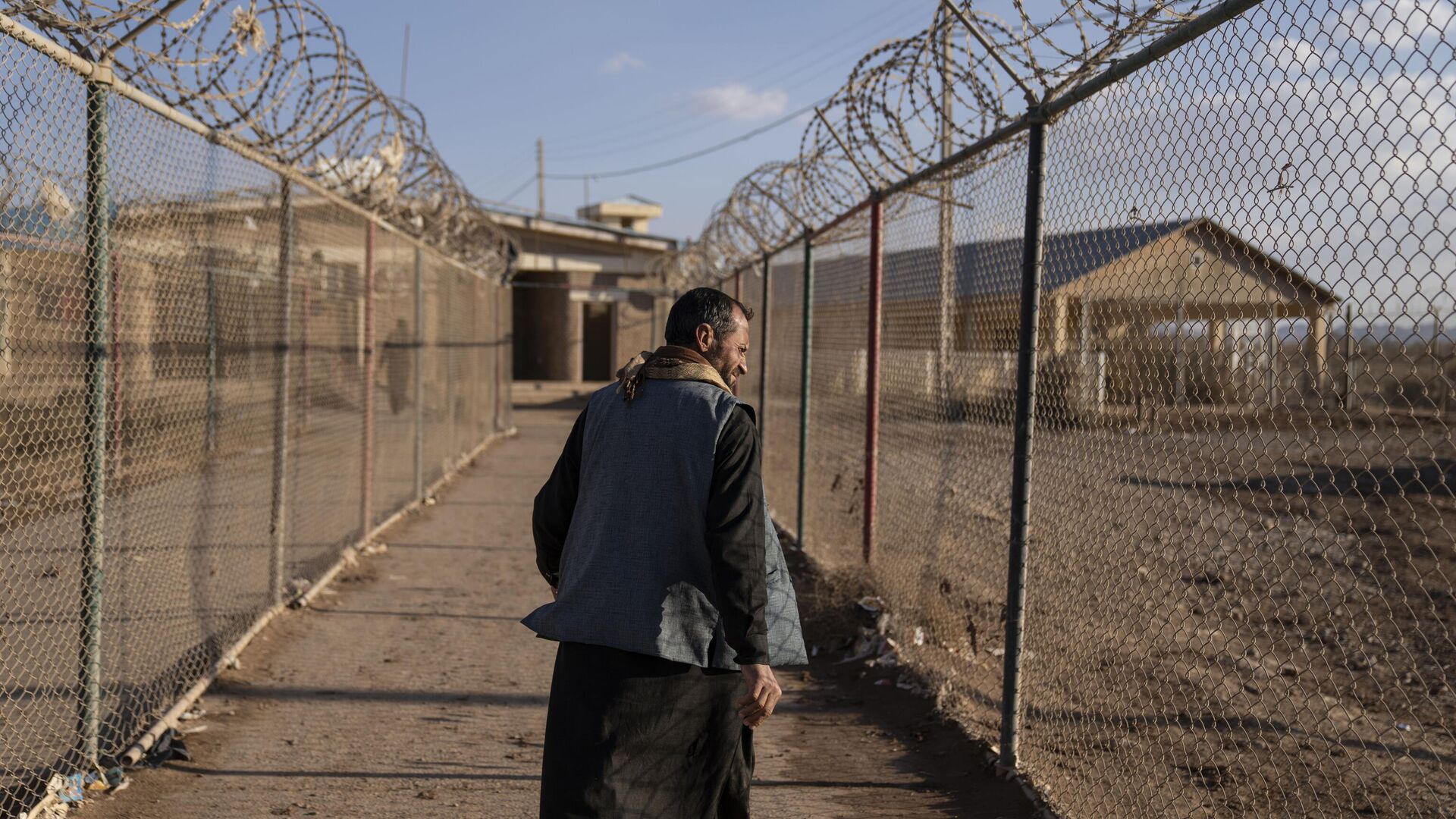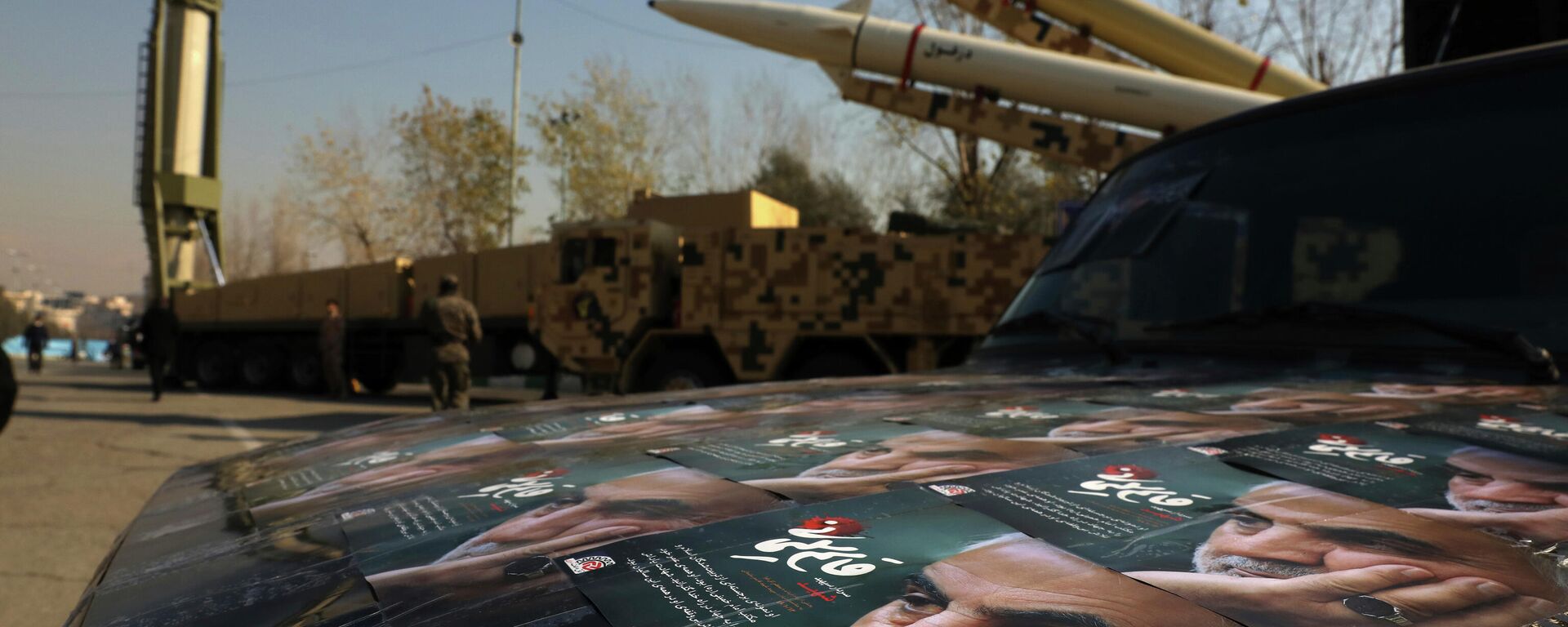https://sputniknews.in/20240910/why-helmand-rivers-water-causes-rift-between-iran--afghanistan-8130074.html
Why Helmand River's Water Causes Rift Between Iran & Afghanistan
Why Helmand River's Water Causes Rift Between Iran & Afghanistan
Sputnik India
The Helmand River has been a major bone of contention between Iran and Afghanistan, with the former repeatedly blaming the latter for not adhering to a 1973 treaty that mandates the release of 820 million cubic meters of its water annually to Iran.
2024-09-10T18:22+0530
2024-09-10T18:22+0530
2024-09-10T18:22+0530
iran
afghanistan
tehran
taliban
kabul
central asia
gulf countries
middle east
sputnik opinion
helmand river
https://cdn1.img.sputniknews.in/img/07e8/02/10/6578580_0:160:3072:1888_1920x0_80_0_0_ae19ac26079e767bc20a856fa88654a2.jpg
Depleting water resources is the main cause of Tehran-Kabul tensions, resulting in frequent border skirmishes between the two neighbouring states, a geopolitical expert has said.Notably, the Islamic Republic consumes almost 83 percent of all available freshwater resources, almost twice as per international standards, he added.Interestingly, Mishra's remarks came in the wake of comments made by Iranian parliamentarian Fada Hossein Maleki. Maleki holds an important position in the Shia-majority nation's National Security and Foreign Policy Commission and recently accused the Taliban of including floodwater in Iran's Helmand River water share.The Helmand River (known as Hirmand in Iran), shared between Afghanistan and Iran, is the only river for which Afghanistan has formally signed an agreement with an immediate neighbour.Its origin lies in the Hindu Kush Mountain ranges, almost 40 kilometers from Kabul, north of the Unai Pass, with five tributaries.Crossing through the Dashti Margo desert (southwest), it makes the Afghan-Iran border through a stretch of 55 kilometers before emptying into the Sistan marshes, finally settling in a system of three interconnected and transboundary wetlands, the Hamoun-e Helmand (within Iran's borders), Hamoun-e Puzak (within Afghanistan borders), and Hamoun-e Sabari (shared between the two countries).For Iran, the Helmand River is a primary source of irrigation, with the economy of its Sistan and Baluchestan province heavily dependent on agriculture practices. It is worth highlighting that over 96% of available surface water entering Sistan and Baluchestan has its source in Afghanistan.Against this backdrop, Mishra stated that drought, floods, and extreme weather have had devastating effects on Iran.In recent years, drought has impacted thousands of Iranians, with 600,000 being affected by the flash floods in 2019, while more than 800,000 Iranians have been internally displaced due to climate change, the international relations pundit noted.It is important to note that, after the 1979 revolution and subsequent international isolation, Tehran viewed the agriculture sector from the eyes of self-sufficiency, with the hope of strengthening Iran's future and sustaining enough produce to feed every single citizen, putting an end to imports, the strategic affairs analyst explained.He underlines that the majority of the population in Iran's Sistan and Baluchestan region is that of the country's Baluchi minority, and the region is considered the most marginalized and volatile.He opined that the solution to the dispute between Iran and Afghanistan lies in creating a water-sharing commission, which has equal representation from Tehran and Kabul.Yet, the challenge lies more for the Taliban, instead of Tehran, Mishra believes.*under UN sanctions for extremism.
https://sputniknews.in/20240516/what-a-nuclear-armed-iran-would-mean-for-south-asia-7376619.html
iran
afghanistan
tehran
kabul
central asia
gulf countries
middle east
helmand river
Sputnik India
feedback.hindi@sputniknews.com
+74956456601
MIA „Rossiya Segodnya“
2024
Pawan Atri
https://cdn1.img.sputniknews.in/img/07e6/0c/13/139630_147:0:831:684_100x100_80_0_0_8fa2b25903e7787fe6a2698552c167df.png
Pawan Atri
https://cdn1.img.sputniknews.in/img/07e6/0c/13/139630_147:0:831:684_100x100_80_0_0_8fa2b25903e7787fe6a2698552c167df.png
News
en_IN
Sputnik India
feedback.hindi@sputniknews.com
+74956456601
MIA „Rossiya Segodnya“
Sputnik India
feedback.hindi@sputniknews.com
+74956456601
MIA „Rossiya Segodnya“
Pawan Atri
https://cdn1.img.sputniknews.in/img/07e6/0c/13/139630_147:0:831:684_100x100_80_0_0_8fa2b25903e7787fe6a2698552c167df.png
helmand river, helmand river, afghanistan iran helmand river water, afghanistan iran helmand river water treaty, afghanistan iran helmand water treaty, iran accuses afghanistan of violating helmand water treaty, iran accuses afghanistan of violating helmand water accord, afghanistan iran fight over helmand river water, helmand river water treaty, helmand river water accord, helmand river treaty violation, helmand river water news, helmand river news,
helmand river, helmand river, afghanistan iran helmand river water, afghanistan iran helmand river water treaty, afghanistan iran helmand water treaty, iran accuses afghanistan of violating helmand water treaty, iran accuses afghanistan of violating helmand water accord, afghanistan iran fight over helmand river water, helmand river water treaty, helmand river water accord, helmand river treaty violation, helmand river water news, helmand river news,
Why Helmand River's Water Causes Rift Between Iran & Afghanistan
The Helmand River has been a major bone of contention between Iran and Afghanistan, with the former repeatedly blaming the latter for not adhering to a 1973 treaty that mandates the release of 820 million cubic meters of its water annually to Iran.
Depleting water resources is the main cause of Tehran-Kabul tensions, resulting in frequent border skirmishes between the two neighbouring states, a geopolitical expert has said.
"Iran has been struggling with water availability for years, but climate change is challenging survival, which is reflected in border skirmishes between the Taliban* border guards and Iranian troops," Strategic affairs commentator Anant Mishra told Sputnik India on Tuesday.
Notably, the Islamic Republic consumes almost 83 percent of all available freshwater resources, almost twice as per international standards, he added.
Interestingly, Mishra's remarks came in the wake of comments made by Iranian parliamentarian
Fada Hossein Maleki. Maleki holds
an important position in the Shia-majority nation's
National Security and Foreign Policy Commission and recently accused the Taliban of including floodwater in Iran's
Helmand River water share.
"Floodwaters are not the same as our rightful water, and even those who support the Taliban's stance recognize this. We expect Foreign Minister Araghchi, through careful planning and adherence to international laws, to pursue Iran's legal right to water from the Helmand River," Maleki told Iranian media on Sunday.
The Helmand River (known as Hirmand in Iran), shared between Afghanistan and Iran, is the only river for which Afghanistan has formally signed an agreement with an immediate neighbour.
Its origin lies in the Hindu Kush Mountain ranges, almost 40 kilometers from Kabul, north of the Unai Pass, with five tributaries.
Crossing through the
Dashti Margo desert (southwest), it makes the Afghan-Iran border through a stretch of 55 kilometers before emptying into the Sistan marshes, finally
settling in a system of three interconnected and transboundary wetlands, the
Hamoun-e Helmand (within Iran's borders),
Hamoun-e Puzak (within Afghanistan borders), and
Hamoun-e Sabari (shared between the two countries).
For Iran, the Helmand River is a primary source of irrigation, with the economy of its Sistan and Baluchestan province heavily dependent on agriculture practices. It is worth highlighting that over 96% of available surface water entering Sistan and Baluchestan has its source in Afghanistan.
Against this backdrop, Mishra stated that drought, floods, and extreme weather have had devastating effects on Iran.
In recent years, drought has impacted thousands of Iranians, with 600,000 being affected by the flash floods in 2019, while more than 800,000 Iranians have been internally displaced due to climate change, the international relations pundit noted.
It is important to note that, after the 1979 revolution and subsequent
international isolation, Tehran viewed the agriculture sector from the eyes of self-sufficiency, with the hope of strengthening Iran's future and sustaining enough produce to
feed every single citizen, putting an end to imports, the strategic affairs analyst explained.
He underlines that the majority of the population in Iran's Sistan and Baluchestan region is that of the country's Baluchi minority, and the region is considered the most marginalized and volatile.
"The existence of Baluchi separatist movements and drug trafficking networks poses a direct threat to Iran's national security. That said, the Iran Meteorological Organization estimates that 97% of the country faces some kind of drought, which ties securing access to water to Iran's national security priority," Mishra stressed.
He opined that the solution to the dispute between Iran and Afghanistan lies in
creating a water-sharing commission, which
has equal representation from Tehran and Kabul.
Yet, the challenge lies more for the Taliban, instead of Tehran, Mishra believes.
"Kabul is devoid of technical expertise such as the absence of an environmental agency, which could oversee cooperation between Iran and Afghanistan by acting as a liaison agency in order to jointly monitor water-sharing rights of the Helmand River," the Visiting Fellow at the University of South Wales' International Centre for Policing and Security concluded.
*under UN sanctions for extremism.



